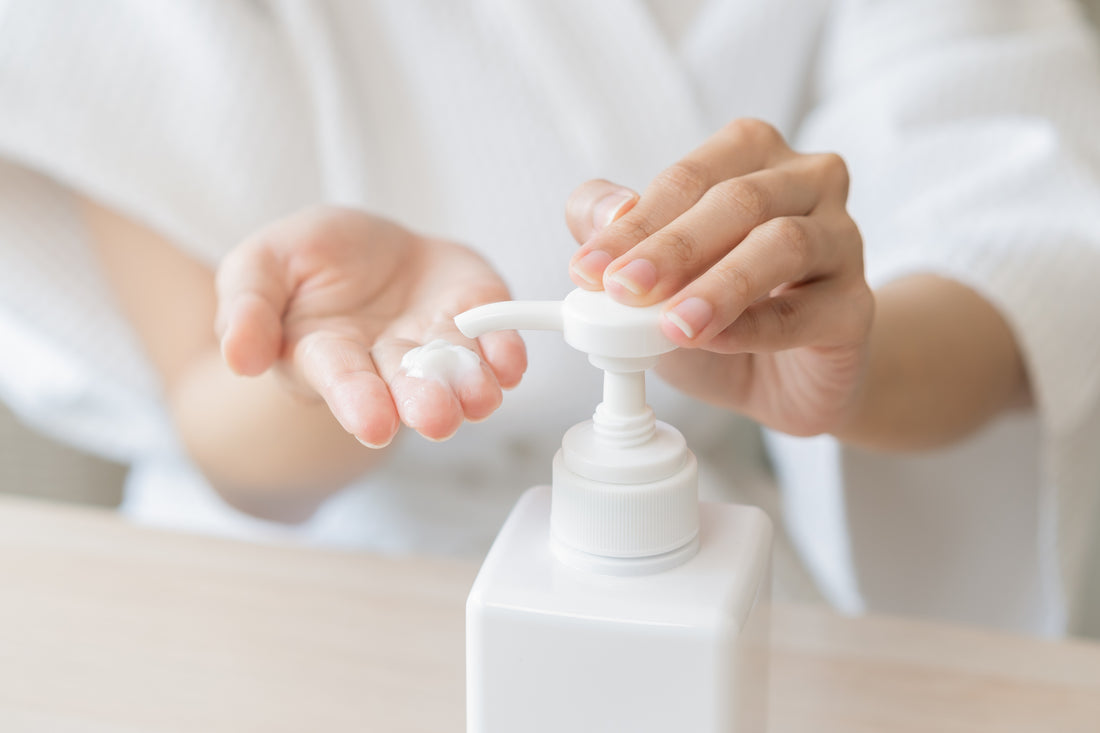
Understanding Moisturiser Withdrawal
Share
Understanding Moisturiser Withdrawal: What You Need to Know
GPs and Dermatologists will tell anyone suffering from TSW or Eczema they must continually moisturise their skin. But what if I told you that constant moisturising may not be the solution for everyone?
In this post, we’ll explore what moisturiser withdrawal is, how to recognise it, and what steps you can take to break the cycle—so your skin can thrive naturally!
What is Moisturiser Withdrawal?
Moisturiser withdrawal happens when the skin becomes so reliant on moisturisers to stay hydrated, losing its natural ability to regulate moisture. This is particularly common with those who overuse heavy (usually prescribed) creams over a long period. The skin can become lazy, so to speak, and stops producing sufficient oils or retaining moisture without help. Reasons I don’t use them and advise customers the same:
- The ingredients they contain are questionable. Doublebase for example contains liquid paraffin, also known as mineral oil. This is a cheap by product of refining crude oil (Petrol!)
- They trap heat so you feel even more itchy and hot.
- They sit on the skin so you have to keep using them throughout the day.
- Using them creates an ideal ground for bacteria. You then get recurring infections for which you have to take antibiotics which have their own side effects and you get stuck in a vicious circle
When you try to cut back or stop using moisturisers, the skin reacts by becoming extra dry, irritated, or flaky, which leads many people to immediately slather on more lotion—perpetuating the cycle.
Signs You Might Be Experiencing Moisturiser Withdrawal:
- Increased dryness: Your skin feels even drier than before, despite using the same amount of moisturiser.
- Flakiness or peeling: Skin starts to shed excessively.
- Irritation or redness: Areas of the skin may become inflamed, especially if moisturisers are suddenly discontinued.
- Temporary worsening of skin condition: People with eczema or psoriasis may notice flare-ups during the withdrawal process.
Breaking the Cycle - The Right Way: If you suspect you’re experiencing moisturiser withdrawal, it’s essential to approach the situation carefully. Quitting cold turkey might cause discomfort, but there are ways to transition smoothly and restore your skin's natural balance. Here are some steps to help break free from moisturiser dependence:
Reduce Gradually: The approach we recommend is to use the Bath Soak and not apply any moisturisers to say one arm or leg (or both) and then compare it to the rest of your body after around 14 days. This will give you the confidence that it’s possible and then you extend to larger parts of your body.
Choose Natural Formulas: Using the right products is key. Switch to lighter, more breathable moisturisers, unrefined Shea Butter, or cold pressed Rosehip Oil for example. These can help your skin slowly adapt to producing its own oils while still providing some external hydration.
Be Patient: Your skin might take time to adjust. There is also a mental barrier to overcome as it's a big change to what we've done for years. During the process, you may experience some discomfort or dryness, but over time, your skin will relearn how to maintain its own moisture balance.
Remember, every skin journey is unique.
